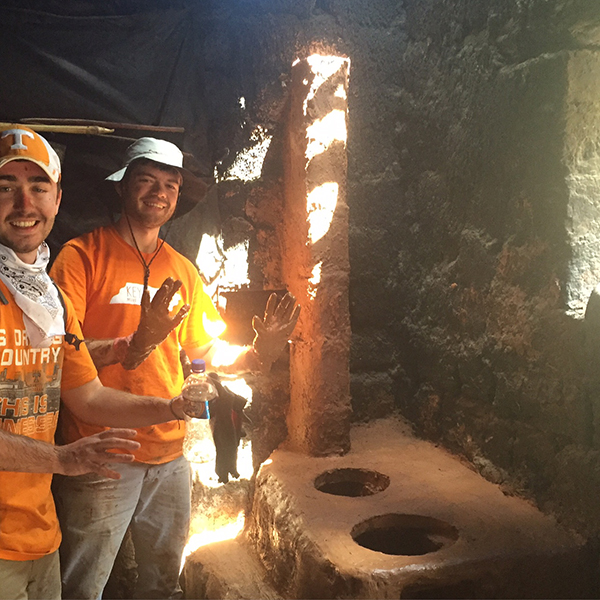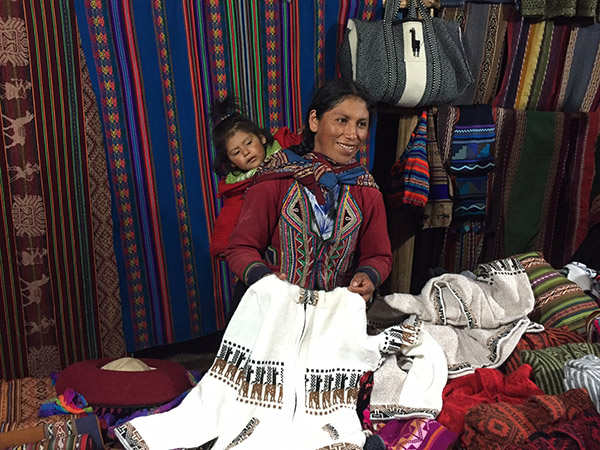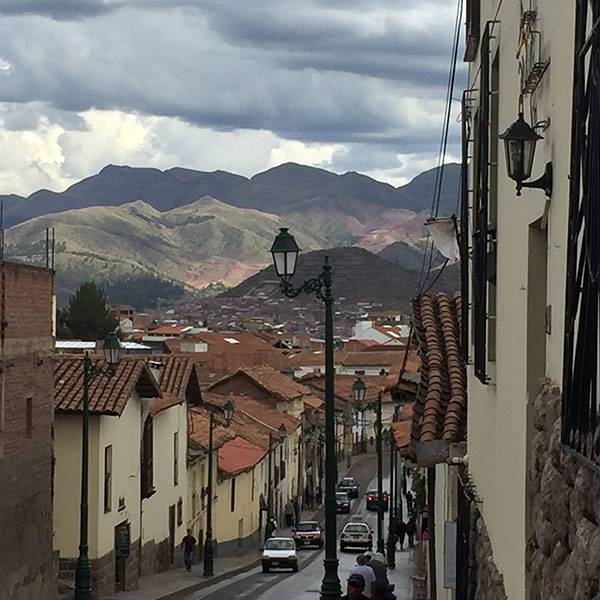Andy Skipper: Student Report from 2015 Alternative Winter Break in Peru

Who knew you could do so much in one week? My experience in Peru was one of the most memorable of my life so far for a variety of reasons. I’m a big nature lover, so obviously the gorgeous mountains towering over the Sacred Valley, the snow-capped mountains dominating the horizon, and the wonderful weather all made this trip a success. When you get to marvel at all of Peru’s natural beauty AND get to interact with the locals in a meaningful project, a truly unforgettable experience occurs.
Having participated in a similar project in Tanzania, I had my expectations heading into this trip. I knew I wanted to spend as much time with the locals as I could, and I wanted to assist them in reaching their community goals without dumping a bunch of stuff on them that wouldn’t really help in the long run (something that a lot of service projects struggle with). I was happy to discover that I would be able to achieve both goals on this trip! The stove project provided a great opportunity to work with the homeowners to build something that will hopefully reduce health issues associated with smoke inhalation and increase cooking capabilities both in the short term and in the foreseeable future. On every work day, I was able to spend several hours with the fathers, mothers, and children who were doing their daily activities in and around the houses. Even with the language barrier, the exchange of a smile, a laugh and a helping hand let me know the work we were doing was valued by the families.
Since the communities were a pretty good distance away from Cusco, we were not always able to spend longer than the several work hours with the families, but I was happy to find that Cusco also had its fair share of interesting people to interact with in town. One night, a small group of us decided to check out the local planetarium which was not anything like you would expect it to be. When the planetarium van came to pick us up in one of the local squares, the guides introduced themselves as family members and proceeded to take us up to their home high above the city. If an in-home planetarium isn’t unusual enough for you, try imagining a handmade projector made of felt that had holes punched in it in such a way that it created a mostly accurate depiction of the southern sky at night complete with every major constellation. We were shown all the visible star constellations and told about their modern significance as well as their significance to the Incas, but one aspect of the ancient Peruvian sky that stood out the most was the existence of dark constellations identified by the Incas. Instead of being shaped by the stars, these objects were shaped around the stars. This planetarium visit was definitely one of my favorite parts of the trip.
One more notable interaction I had with the local people was our in-home dinner hosted by a family who lived near our hotel. The family was beyond generous and prepared us a three course meal including a Peruvian staple entrée, lomo saltado. Anyone can go to a country and see all the well-known tourist sites, but it is easy to miss out on really experiencing the culture. This dinner was one of the times on the trip when I felt I could definitely say that I experienced something that most people do not when they go to Peru. The personal connections make trips like these so much more meaningful.

When it comes to food, I like to think of myself as someone who will try almost anything. I had eaten shark, barracuda, antelope, and several other exotic foods before coming on this trip, but I was not disappointed by what I found in Cusco. In addition to the delicious soups and chicken/beef that were common for most of our meals, I was able to try an alpaca steak and a few pieces of guinea pig from two of the local restaurants. I would like to say that I enjoyed eating those things, but I’d be lying. I’ll always try something new, but some things are better left uneaten…
As an aspiring doctor, I always appreciate the opportunity to gain insight into the medical infrastructure in developing countries such as Peru, but sometimes this occurs under rather uncomfortable circumstances. A reality any time you go on a trip abroad is the possibility of getting sick. There are many precautions that a traveler should always take, but sometimes germs just manage to find their way past all of your defenses. On this trip, I was unfortunate enough to fall victim to some of the commonly contracted “travelers’ sicknesses.” Everyone else was fine, but I got the pleasure of experiencing the medical side of Peru first-hand. Just in case one of you ever finds yourself in this situation and wonders what will happen, I am glad to tell you that the medical care in Peru is exceptional. I was given all of the comfort and care that Americans have come to expect from our own healthcare system, so I am incredibly grateful for that. With their help, I was back working on the stove project in hardly any time at all.
Finally, you can’t go to Peru and not talk at least a little bit about the archeological sites. Whether I’m observing the ancient kingdom of the Incas or the Mayans or some other ancient civilization, I am always fascinated by the seemingly impossible feats that these ancient humans were able to accomplish. The Incan structures we saw were built with enormous stones on the faces or tops of mountains, and each block was so precisely carved and positioned that a piece of paper would not fit between it and its neighbor. Trying to picture just how hard it must have been to coordinate and achieve these things without the help of any modern equipment is almost impossible. Impressive would be an understatement.
Going to Peru was a decision that will affect me for the rest of my life. Every time I go to another country, my global perspective is expanded. I hope to use this outlook to benefit myself and the people I interact with daily after I leave UT. I am very satisfied with the experience in the country, the project, the Peruvian coordinators, all of the people here at UT who helped set the trip up like Mrs. Mallory, and definitely all of the students who worked alongside me.
